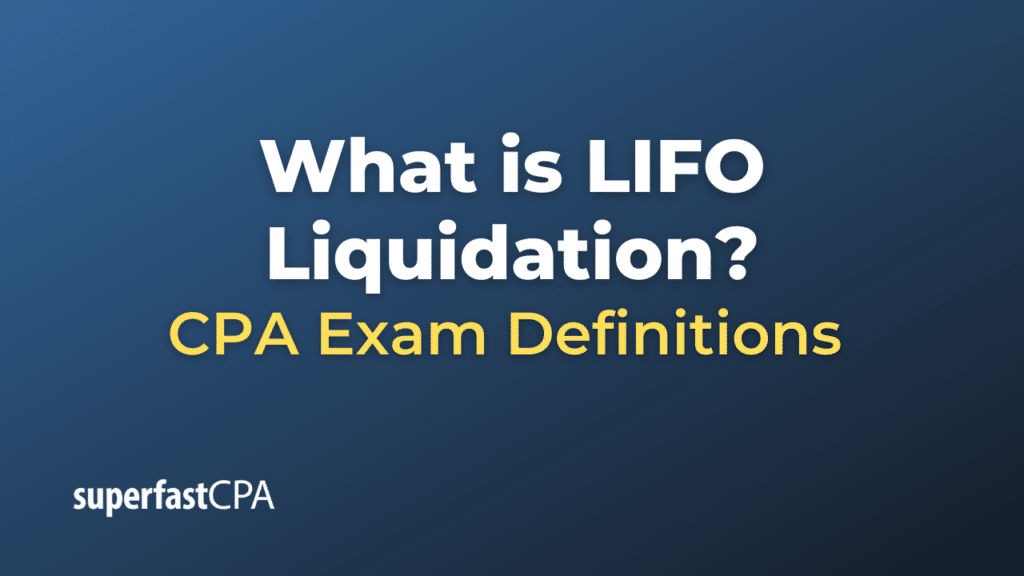LIFO Liquidation
LIFO liquidation is a process that occurs when a company using the Last-In, First-Out (LIFO) inventory valuation method sells more inventory than it purchases or produces in a given period. This results in the company ‘digging into’ its older LIFO layers of inventory.
Under the LIFO method, the most recent inventory items purchased or manufactured are considered the first to be sold. If a company sells more than it buys or produces, it will have to ‘dip into’ the older, lower-cost inventory layers that have been sitting on its balance sheet.
When these older inventory layers are liquidated or sold off, the cost of goods sold (COGS) on the income statement decreases because these older inventory items have lower associated costs (assuming prices have been rising). This results in higher reported gross margins and taxable income.
The impact of LIFO liquidation can be problematic for several reasons:
- Distorted Profits: The profits from LIFO liquidation might be misleading as they are essentially one-time gains from selling off old inventory. They don’t represent the company’s ongoing profitability.
- Unexpected Tax Burden: Because LIFO liquidation results in higher taxable income, companies can face an unexpected increase in their tax liability.
- Inconsistent COGS: LIFO liquidation can lead to inconsistencies in the cost of goods sold, which makes it difficult to compare profitability across periods.
It’s worth noting that companies usually aim to avoid LIFO liquidation by managing their inventory purchases and production in a way that prevents the need to dip into older inventory layers. However, it may sometimes be unavoidable, such as during periods of inventory shortages or unexpected increases in sales demand.
Example of LIFO Liquidation
Let’s consider a hypothetical company that sells widgets. This company uses the Last-In, First-Out (LIFO) method for inventory accounting.
Let’s assume that over the years, the company has accumulated the following LIFO layers of inventory:
- 2019: 1,000 widgets at a cost of $10 each.
- 2020: 2,000 widgets at a cost of $15 each.
- 2021: 1,000 widgets at a cost of $20 each.
- 2022: 1,500 widgets at a cost of $25 each.
In the year 2023, the company buys 1,000 more widgets at $30 each but sells 4,000 widgets throughout the year.
According to the LIFO method, the most recently acquired inventory is sold first, so here’s how the sales are accounted for:
- All 1,000 widgets from the 2023 purchase at $30 each are sold.
- All 1,500 widgets from the 2022 purchase at $25 each are sold.
- 500 widgets from the 2021 purchase at $20 each are sold.
- The remaining 1,000 widgets sold come from the 2020 inventory, at $15 each.
Notice that the company had to dip into the 2020 LIFO layer. This is a LIFO liquidation event. The company has sold more inventory than it purchased in 2023, leading it to sell inventory from an older, lower-cost layer.
This will result in a lower cost of goods sold (COGS) and higher gross margin than if the company had not dipped into the 2020 inventory. However, it also increases the company’s taxable income, potentially leading to a higher tax bill. Furthermore, the profitability improvement could be temporary, as it is based on liquidating lower-cost inventory that won’t be replaced given the current costs of widgets.
This example illustrates how LIFO liquidation works and some of the implications for a company’s financials and tax situation.













